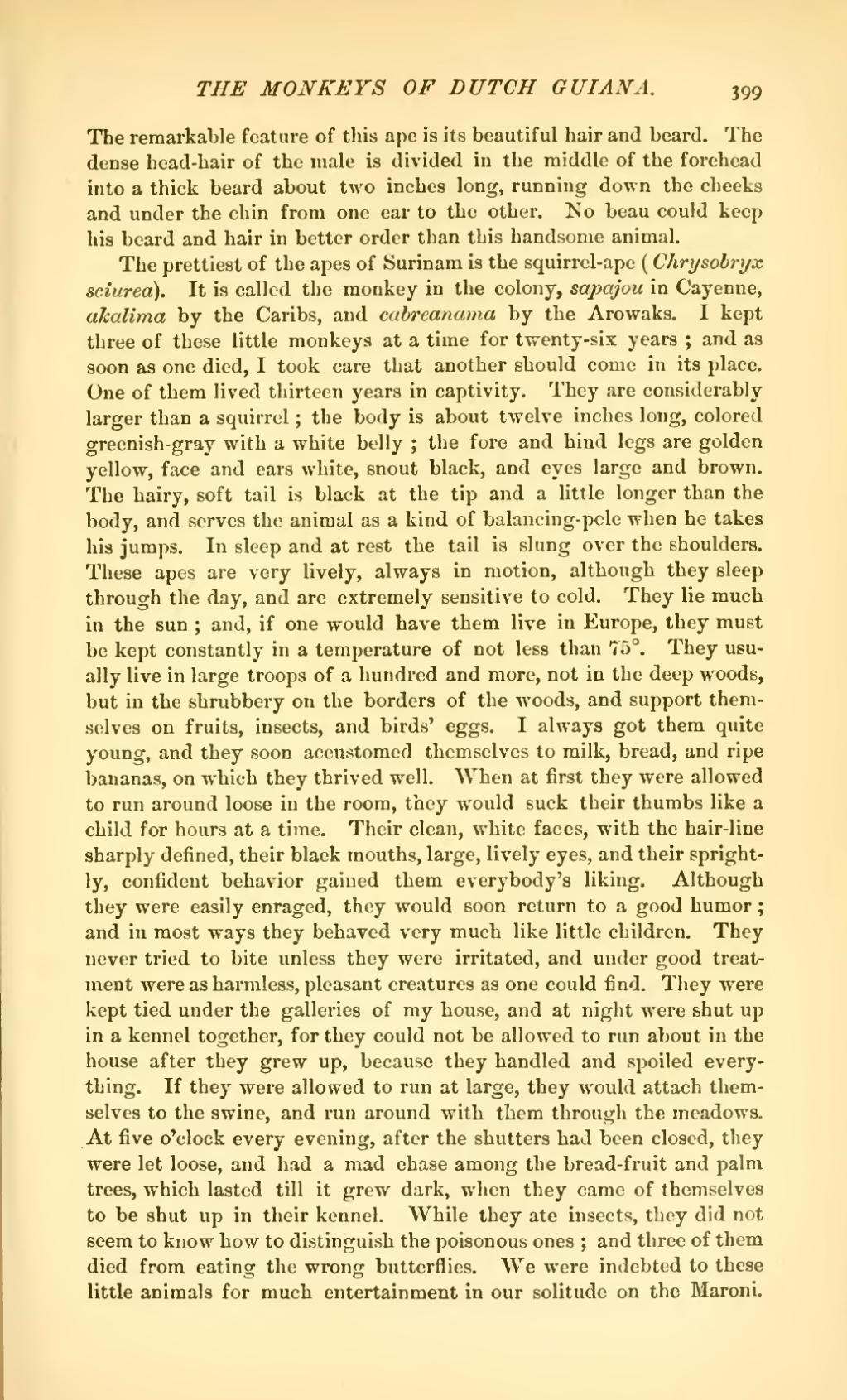The remarkable feature of this ape is its beautiful hair and beard. The dense head-hair of the male is divided in the middle of the forehead into a thick beard about two inches long, running down the cheeks and under the chin from one ear to the other. No beau could keep his beard and hair in better order than this handsome animal.
The prettiest of the apes of Surinam is the squirrel-ape (Chrysobryx sciurea). It is called the monkey in the colony, sapajou in Cayenne, akalima by the Caribs, and cabreanama by the Arowaks. I kept three of these little monkeys at a time for twenty-six years; and as soon as one died, I took care that another should come in its place. One of them lived thirteen years in captivity. They are considerably larger than a squirrel; the body is about twelve inches long, colored greenish-gray with a white belly; the fore and hind legs are golden yellow, face and ears white, snout black, and eyes large and brown. The hairy, soft tail is black at the tip and a little longer than the body, and serves the animal as a kind of balancing-pole when he takes his jumps. In sleep and at rest the tail is slung over the shoulders. These apes are very lively, always in motion, although they sleep through the day, and are extremely sensitive to cold. They lie much in the sun; and, if one would have them live in Europe, they must be kept constantly in a temperature of not less than 75°. They usually live in large troops of a hundred and more, not in the deep woods, but in the shrubbery on the borders of the woods, and support themselves on fruits, insects, and birds' eggs. I always got them quite young, and they soon accustomed themselves to milk, bread, and ripe bananas, on which they thrived well. When at first they were allowed to run around loose in the room, they would suck their thumbs like a child for hours at a time. Their clean, white faces, with the hair-line sharply defined, their black mouths, large, lively eyes, and their sprightly, confident behavior gained them everybody's liking. Although they were easily enraged, they would soon return to a good humor; and in most ways they behaved very much like little children. They never tried to bite unless they were irritated, and under good treatment were as harmless, pleasant creatures as one could find. They were kept tied under the galleries of my house, and at night were shut up in a kennel together, for they could not be allowed to run about in the house after they grew up, because they handled and spoiled everything. If they were allowed to run at large, they would attach themselves to the swine, and run around with them through the meadows. At five o'clock every evening, after the shutters had been closed, they were let loose, and had a mad chase among the bread-fruit and palm trees, which lasted till it grew dark, when they came of themselves to be shut up in their kennel. "While they ate insects, they did not seem to know how to distinguish the poisonous ones; and three of them died from eating the wrong butterflies. We were indebted to these little animals for much entertainment in our solitude on the Maroni.

